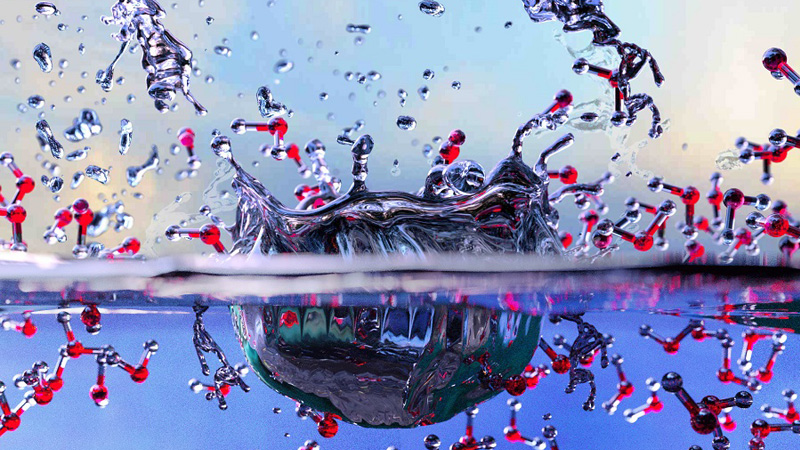Energy Frontier Research Centers
EFRCIn 2009, the U.S. Department of Energy’s Office of Science/Office of Basic Energy Sciences established the Energy Frontier Research Centers (EFRCs). These EFRCs are composed of small teams of leading university and national laboratory researchers focused on solving specific scientific problems that are blocking clean energy development. Since 2009, the EFRCs have produced a wide range of new technologies that have benefited multiple private sector companies, both large and small.
In 2022, DOE announced $400 million in funding for 43 EFRCs. As part of that announcement, Argonne was selected to continue leading the Advanced Materials for EnergyWater Systems Center, whose mission is to understand and design adsorption, reactivity, and transport at water-solid interfaces to enable future advances in materials for efficient water treatment.. In addition, Argonne is a key partner in the following other Centers:
- Catalyst Design for Decarbonization Center
- Center for Novel Pathways to Quantum Coherence in Materials
- Center for the Advancement of Topological Semimetals
- Fluid Interface Reactions, Structures and Transport Center
- Inorganometallic Catalyst Design Center
- Institute for Cooperative Upcycling of Plastics
- Interfacial Dynamics in Radioactive Environments and Materials
-
Quantum Materials for Energy Efficient Neuromorphic Computing
Argonne’s integrated and flexible approach to research and discovery is ideal for EFRC work because we pull together science and engineering leaders across institutional boundaries, allowing them to take a collaborative approach to specific scientific challenges.
Advanced Materials for Energy-Water Systems (AMEWS)
A huge number of the challenges we face surrounding water center on the interface between water and the materials that make up the systems that handle, process, and treat water. Gaining a deeper understanding of what takes place when water — and matter dissolved or suspended in water — comes into contact with those solids is the focus of the Argonne-led Advanced Materials for Energy-Water Systems effort. For example, in many water systems, a phenomenon known as fouling — the accumulation of unwanted material on solid surfaces to the detriment of function — occurs at interfaces. Another area AMEWS is exploring is reactivity, or chemical reactions, at interfaces. Argonne is partnering with the University of Chicago and Northwestern University on the four-year effort. Argonne’s effort is led by Seth Darling.
Catalyst Design for Decarbonization Center (CD4DC)
The research performed in the Catalyst Design for Decarbonization Center will advance fundamental scientific understanding of how to embrace the energy transition required by our society, with specific focus on hydrogen as an energy vector. The University of Chicago is leading the center.
Center for Novel Pathways to Quantum Coherence in Materials (NPQC)
The mission of the Center for Novel Pathways to Quantum Coherence in Materials is to expand dramatically our understanding and control of coherence in solids by building on recent discoveries in quantum materials along with advances in experimental and computational techniques. Lawrence Berkeley National Laboratory is leading the center.
Center for the Advancement of Topological Semimetals (CATS)
The Center for the Advancement of Topological Semimetals seeks to understand and discover new quantum phenomena and functionality in topological materials for future applications in spin-based electronics, computing, and sensing. Ames Laboratory leads this center.

The Fluid Interface Reactions, Structures and Transport Center (FIRST)
The Fluid Interface Reactions, Structures and Transport Center addresses another aspect of electrical energy storage by developing greater understanding and models of the nanoscale environment at fluid-solid interfaces -- which is a key environment in batteries. The center is led by Oak Ridge National Laboratory.
Inorganometallic Catalyst Design Center (ICDC)
The Inorganometallic Catalyst Design Center was formed to design materials and processes for energy-efficient conversion of shale gas components. The University of Minnesota is heading the effort.
Institute for Cooperative Upcycling of Plastics (iCOUP)
The goal of the Institute for Cooperative Upcycling of Plastics (iCOUP) is to create catalysts that transform discarded single-use plastics into more valuable products, providing incentives to treat used plastics as a resource rather than as garbage. The center’s research seeks to uncover macromolecular and catalytic phenomena at the interface of molecular-scale chemistry and mesoscale materials science to enable upcycling of energy-rich plastics. Ames Laboratory leads this center.
Interfacial Dynamics in Radioactive Environments and Materials (IDREAM)
The Interfacial Dynamics in Radioactive Environments and Materials (IDREAM) conducts fundamental science to support innovations in retrieving and processing high-level radioactive waste. It seeks to master fundamental interfacial chemistry in complex environments characterized by extremes in alkalinity and low-water activity. This center is led by Pacific Northwest National Laboratory.
Quantum-Materials for Energy Efficient Neuromorphic-Computing (Q-MEEN-C)
The Center for Quantum-Materials for Energy Efficient Neuromorphic--Computing will lay down the quantum-materials-based foundation for the development of an energy-efficient, fault-tolerant computer that is inspired and works like a brain (“neuromorphic”). The University of California, San Diego, leads this center.







